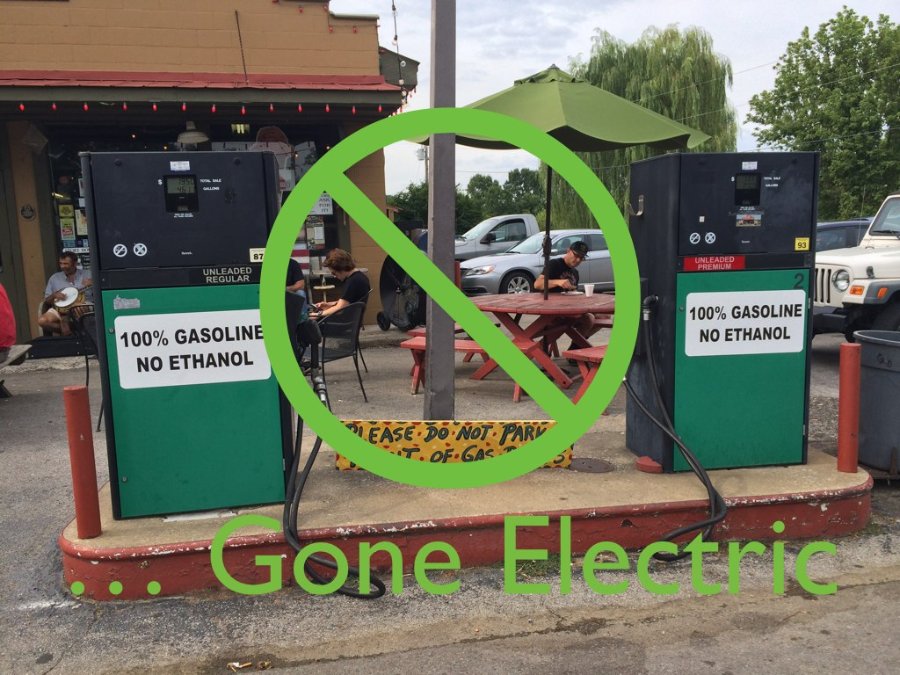This article includes some of the thoughts I shared in a recent roundtable with BWG Strategy on the status of the Electric Vehicle industry.
Although right after school I was lucky enough to become a young engineer at Ferrari in Formula One, most of my career has been outside of the automotive industry. Interestingly, I was never too far, having been involved in renewable energy integration, as well as electric vehicle (EV) charging infrastructure.
Many of us grew up with General Lee and Rosco’s Police cars “gas-guzzling” around Hazzard County. We loved those cars so much that replicas still exist around the world. They were sure 100% gasoline, not even ethanol. But, much has changed since then in the automotive industry.
A firm believer that a basket of technologies is the best solution to our static and transportation energy needs, I have been lucky to equally enjoy internal combustion engine (ICE) and electric vehicles. I don’t have a preference: today they are different products for different purposes.
Despite the fact that the pace of technological innovation is increasing the touch points with other industries, the automotive sector remains a closed knit world, with lots of shared views. For the first time in 100 years the industry is becoming an open field, where startups like Tesla can challenge the common beliefs, find their niche and succeed.
EVs are not new; what is new is the accelerated pace of change, driven by capital investments that are happening now.
From my not too distant and independent viewpoint, grounded in some recent facts, here is what I see in the EV segment.
Regardless of whether the vehicle is a plug-in hybrid electric vehicle (PHEV) or battery electric vehicle (BEV) the battery is the main technology driver for EV and is responsible for three key purchasing decision factors, among others:
- Driving range – BEV on average go 80-120 miles with one charge (except for Tesla that can go up to 200-300 miles with very large 65-85 kWh batteries), while PHEV typically have a range up to 400 miles with a full charge and a full tank of gas.
- Price – The battery accounts for anywhere between 10-20% (PHEV) and 40-50% (BEV) of the initial vehicle cost.
- User experience – Charging time, energy replenishment infrastructure, whether it is battery charging or swapping, and service infrastructure determine how and where EV can be used
A good battery technology roadmap has been structured in the EV Everywhere blueprint, published by the DOE Office of Energy Efficiency, with three main technology goals to be reached by 2022:
- Reduce battery cost by 75% (from $500 to $125 per kWh).
- Reduce battery size by 50%.
- Reduce battery weight by 50%.
If achieved, these goals will translate in a BEV that is able to run for 280 miles on one charge and has a levelized cost (the total sum of purchasing + five years operating costs) equal to an ICE vehicle. This would make EV mass market penetration a reality, with a respectable share of 10-15%. Achieving EV mass market depends on three key battery success factors:
A. Technology standardization.
B. Cost reduction.
C. Capital investments across the entire battery value chain.
Let’s take a look at what is happening for each of them.
A. Li-ion Is Becoming the Current Industry Standard for EV Batteries
According to Navigant Research “in 2012, Toyota launched the Plug-in Prius, powered for the first time with lithium ion (Li-ion) batteries. This shift from the well-established nickel-metal hydride (NiMH) batteries to Li-ion represented a major endorsement of the ability of this chemistry to perform consistently in an automotive environment. Since then, most of the other major OEMs have introduced battery electric vehicle (BEV) and plug-in hybrid electric vehicle (PHEV) models, almost all of which use Li-ion batteries for onboard energy storage”.
The recent announcements of Tesla releasing its patents in the public domain, and BMW indicating interest in sharing the technology developed with their partner, Samsung SDI, are clearly a further effort to pool resources in driving standardization and better technology.
B. EV Batteries Are Getting Lighter and Cost Reduction is Accelerating
It is widely believed that the threshold to reach a mass automotive market is $250 per kWh. DOE sponsored research achieved $325 per kWh in 2014. Battery manufactures are following suit by reducing costs and increasing energy density (Samsung SDI plans to move from the current 130 Wh/kg to 250 Wh/kg by 2019 and to 300 Wh/kg around 2020). As manufacturing costs are expected to continue their improvement on both battery chemistry and management systems, battery price decreases started to accelerate, most recently as a result of aggressive pricing from LG Chem, supplier to the Chevrolet Volt, and Panasonic, supplier to Tesla’s Model S.
C. Solid Growth Forecasts for Li-Ion Technology is Attracting Capital Across the entire Value Chain
While e-readers, tablets, laptops and mobile phones continue to drive demand for Li-Ion batteries, hybrid and EV are estimated to account for over 50% of sales by 2024.
In 2013 Pike Research published that the global market for lithium-ion (Li-ion) batteries in light duty vehicles was expected to grow from $1.6 billion in 2012 to almost $22 billion in 2020. In 2014 Navigant Research (who acquired Pike Research in March 2013) reported that, lithium-ion batteries for light duty consumer vehicles would increase more than 7x in 10 years, from $3.2 billion in 2013 to $24.2 billion in 2023.
Tighter emissions standards in Europe are expected to drive global production of EVs by 67% in 2014, according to IHS Automotive, with total production projected to rise from 242,000 in 2013 to 403,000 in 2014. Europe and the Middle East and Africa region will account for the largest share of production at more than 40%, with the Americas and Asia-Pacific each making up about 30%.
While there has been a lot of talk around Tesla’s Gigafactory, planned to be in operation by 2016, with 6,500 employees and producing batteries at ~$300 per kWh for 500,000 vehicles per year in the US Southwest, current suppliers are immediately working to ramp up production to satisfy the increasing demand of vehicle manufactures.
South Korea LG Chem Ltd signed a MOU to build an EV battery factory in China by 2015, breaking ground in September 2014. LG Chem will target SAIC Motor Corp and GM among other locally producing customers.
BMW, a company that for a long time focused on fuel cells to solve the range anxiety, is now planning to increase its purchases of SDI battery cells for the electric i3 city car and the plug-in hybrid i8 sports car as well as for “additional hybrid models”. BMW expects to buy batteries for approximately $400 million in 2014 and at least 20-30% more in 2016.
The agreement comes as Samsung SDI launches its new structure geared towards the expansion of its automotive business, after the $3.4 billion acquisition of Cheil Industries, whose materials technology “will be utilized to substantially strengthen the technological competitiveness of the overall battery business”.
According to the 2010 Critical Materials Strategy of the U.S. Department of Energy, demand for lithium carbonate is forecast to exceed global supply by 2025 unless capacity is tripled beginning in 2015. Capital markets are now believing these numbers and becoming active in other segments of the battery value chain, starting from the very source, commodities.
Soc. Quimica & Minera de Chile SA (SQM), world’s largest lithium producer, forecasted in April a 7-10% annual growth for the next decade and is now gearing its operations to satisfy the demand.
The lithium industry biggest deal to date happened just few days ago, on July 15, when Albemarle Corp. (ALB), of Baton Rouge, LA, agreed to buy world’s leading manufacturer of lithium-based compounds, Rockwood Holdings Inc. (ROC) of Princeton, NJ, for $6.2 billion in cash and stock. Albemarle justified the deal by saying that demand for lithium is increasing three times faster than the overall economy and is expected to further accelerate in 2017, because of the automotive industry.
These success factors will help the industry increase driving range, reduce price, and partially improve user experience. After that, a superior customer experience will be only be achieved by setting up a capillary service structure.
At first sight this appears to be an advantage for established automotive companies, as they can build it within the existing dealer network for a fraction of the cost of a startup.
But history taught us that incumbents are frequently missing the best opportunities. So we may end up being surprised of how newcomers could create a different and better experience to capture a large share of the EV market. Maybe by that time we will be happy to quietly drive an EV in our local Hazzard County and admire General Lee and Rosco’s Police cars silently parked on the side of the road.
Sergio Corbo is a commercial senior executive who helps fortune 500 corporations serve the Customer and deliver measurable results to investors. You can follow his thought leadership at www.linkedin.com/in/sergiocorbo
 Senior Executive with Commercial and P&L Leadership Experience
Senior Executive with Commercial and P&L Leadership Experience





